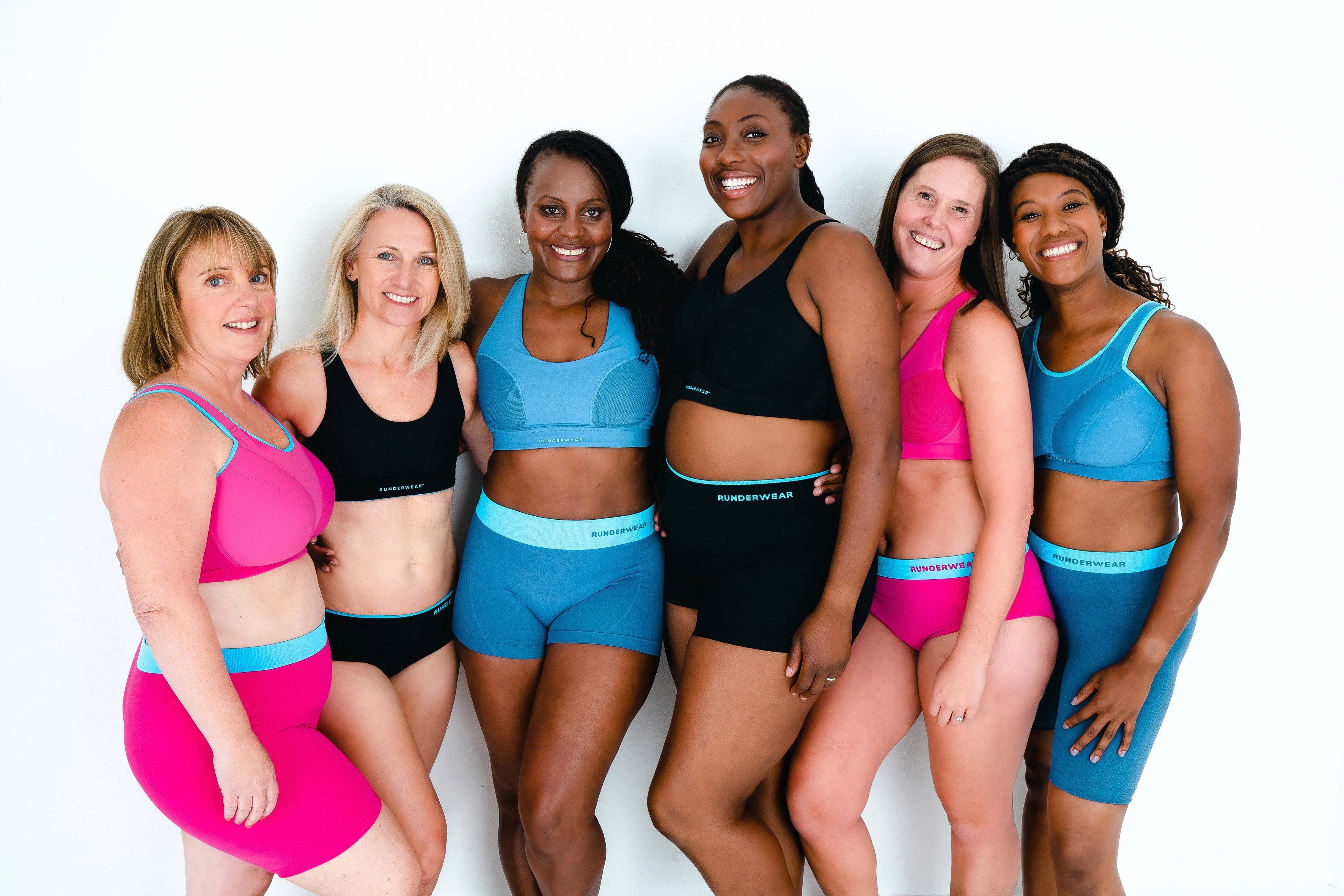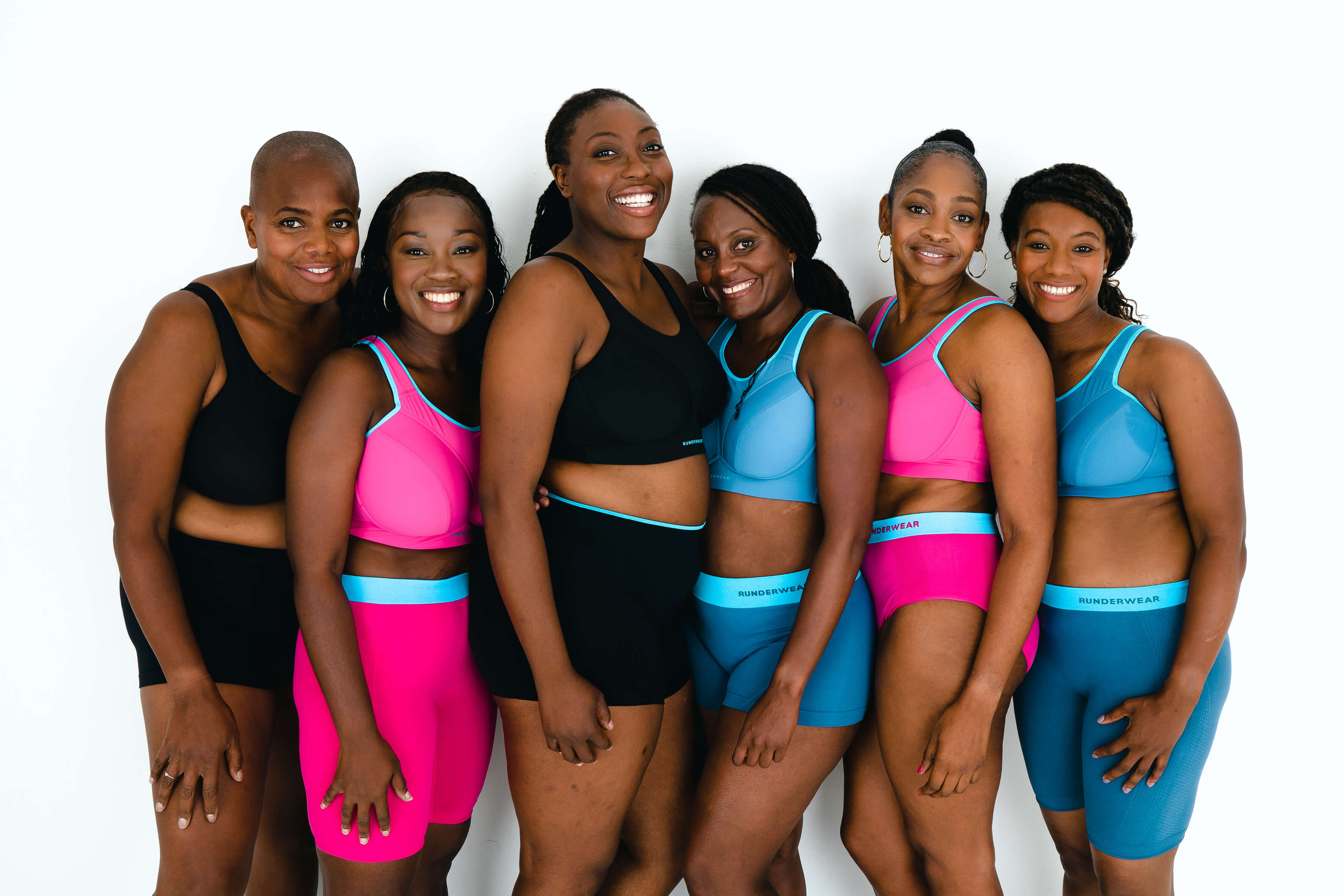We all know we need a decent sports bra when it comes to getting a good workout in, but do we really know exactly what makes a good sports bra?
Sports bras have come a long way since the first was created in 1977 from two jockstraps sewn together. Today, sports bras have many features and components which can be a little overwhelming at first glance, particularly if you're not sure what you're comparing. Don’t worry, we will talk through the ‘anatomy’ of sports bras, so you’ll be an expert by the end of this feature!
CUPS
The cups of a bra are designed to hold and shape the breasts. Encapsulation and combination sports bras have cups, whilst compression generally do not. Cups can be padded or non-padded and can also provide shape enhancement for the desired effect, for example, push up or t-shirt fit. Your cup size is the letter part of your bra size (e.g., A, B, C, D, DD).
View our Running Bra Cup Size A-E
View our Running Bra Cup Size D-H
UNDERBAND
The underband sits at the base of the sports bra and goes around the ribcage. The underband should fit snug to the body and remain in place during movement. The underband should never be so tight that is causes pain or restricts breathing. A well fitted, soft, seam free underband is ideal to prevent chafing whilst helping to keep breast movement under control.
UNDERWIRE
The underwire is only present on some sports bras. It provides shape to the cup and should not dig into the breast. The underwire is usually sewn into a double wall channel with reinforced ends to provide comfort and prevent digging in. Choosing a wired or non-wired sports bra is simply down to personal preference. Expectant or nursing runners should avoid wearing underwired bras to allow for maximum comfort as the body changes, and help to prevent the onset of mastitis.
CENTRE PANEL
This is the middle part of the sports bra that separates and connects the cups, and is usually found on encapsulation sports bras. The centre panel is made of rigid material to stabilise the position of the bra on the chest. It is part of the core structure to provide breast support. The centre panel will sit flat against the skin on a correctly fitted sports bra.
View our International Bra Size Chart
STRAPS
A common misconception is that the straps provide the main support for your breasts. However, the straps should not take the full weight of the breasts. The straps should maintain the vertical placement of the bra on the body. Straps are often elasticated and padded to provide comfort and prevent digging in. Straps come in a range of designs such as regular, cross back, racerback, and convertible. Straps should be adjustable so that you can change the length of them. This is important because the length of a woman’s torso is very individual- therefore one size does not fit all! Your bra straps should be adjusted to prevent slipping down, but not so tight to cause pain.
BRA WINGS
The bra wings are the part of the bra that supports your sides and back. Sports bras often feature wider wings to provide additional support and comfort during activity.
HOOK AND EYELET
Compression style sports bras will not feature this as you put the sports bra on and off over your head. However, encapsulation and combination sports bras generally open at the back so have a closure. They vary in number and width but are often three sets of two or three hooks. The more hooks, the greater size range and customisation. A new sports bra should generally be worn on the loosest setting so that overtime as it stretches you can tighten the band to ensure it still provides the correct support.





Leave a comment
All comments are moderated before being published.
This site is protected by hCaptcha and the hCaptcha Privacy Policy and Terms of Service apply.